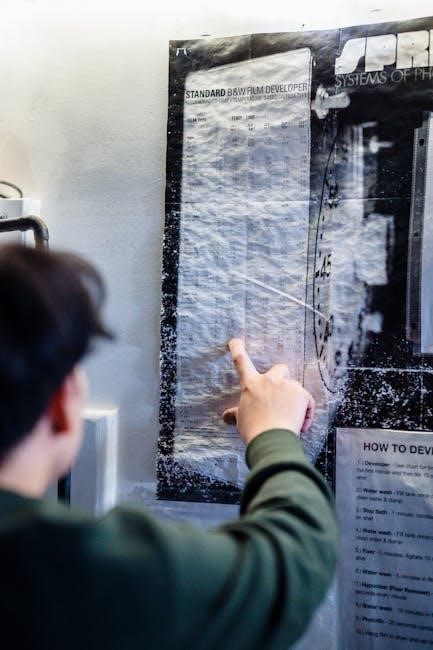Discover the art of Kumihimo‚ a traditional Japanese braiding technique with a rich history spanning over 2‚000 years. Originating in 645 A.D.‚ it combines silk threads on a braiding disk to create intricate designs‚ evolving from functional uses like armor ties to modern jewelry and decorative accessories.
1.1 What is Kumihimo?
Kumihimo is an ancient Japanese braiding technique that involves the artful intersection of threads. Translating to “gathered threads‚” it uses a round braiding disk or loom to weave strands into intricate patterns. This method allows for both functional and decorative creations‚ from traditional cords to modern jewelry. The process requires careful arrangement and tension control‚ making it a meditative yet precise craft. Kumihimo’s versatility has made it a cherished practice for centuries‚ adapting to contemporary uses while preserving its cultural essence.
1.2 Brief History and Cultural Significance
Kumihimo‚ meaning “gathered threads‚” has a rich history dating back to 645 A.D. in Japan. Originally used for practical purposes like securing samurai armor‚ it later evolved into a decorative art form during the Edo period. Kumihimo became a symbol of status and elegance‚ adorning traditional clothing and accessories. Its intricate braids were also used in religious ceremonies‚ signifying unity and strength. Over centuries‚ Kumihimo transitioned from a functional craft to a revered artistic tradition‚ preserving Japanese cultural heritage while inspiring modern adaptations in jewelry and textiles.

Materials and Tools Needed
To begin Kumihimo‚ you’ll need a braiding disk‚ threads (silk or synthetic)‚ scissors‚ and a measuring tool. Optional items include beads‚ wire‚ and weights for tension control.
2.1 Overview of Essential Supplies
The core supplies for Kumihimo include a braiding disk‚ threads (silk or synthetic)‚ scissors‚ and a measuring tool. A disk with numbered notches helps guide threads‚ while weights or clips can maintain tension. Beads and wire are optional for decorative designs. Choose threads in various colors and textures to achieve desired patterns. Basic crafting tools like a needle and thread conditioner may also be useful. Proper supplies ensure a smooth braiding process‚ allowing you to focus on creating intricate and beautiful designs with ease.
2.2 Choosing the Right Threads and Colors
Selecting the appropriate threads and colors is crucial for achieving desired Kumihimo results. Traditionally‚ silk threads were used‚ but modern practitioners often opt for synthetic alternatives due to durability and cost-effectiveness. Colors should harmonize to create visually appealing patterns‚ with options ranging from subtle monochromes to vibrant multicolor designs. Thread weight and texture also impact the braid’s appearance‚ so match thicknesses for consistency. Experiment with palettes inspired by nature or cultural motifs to add personal flair to your creations while maintaining balance and aesthetic appeal.

Basic Kumihimo Techniques
Master the fundamentals of Kumihimo with essential techniques like setting up your braiding disk‚ arranging threads‚ and maintaining even tension. These basics pave the way for intricate designs.
3.1 Setting Up Your Braiding Disk
To begin‚ place the braiding disk with the numbered side facing up. Insert strands into the slits‚ ensuring they form a cross shape. For even tension‚ secure the threads with a clip or tape. Position the disk so the numbers 32 and 16 are at the top and bottom. This setup ensures proper thread alignment and ease of braiding. Always organize your threads neatly to avoid tangling and maintain control over the design. Proper setup is key to achieving a smooth and consistent braid.
3.2 Starting Your First Braid
Begin by cutting eight strands of thread‚ each about 20 inches long‚ and knot the ends. Place the strands on the braiding disk‚ forming a cross shape. Secure the threads with a clip or weight to maintain even tension; Hold the disk firmly and gently pull the strands to tighten. Start braiding by crossing the strands in a sequence‚ following the pattern or design you wish to create. Keep the tension steady to ensure a smooth and consistent braid. Practice patience‚ as the initial steps may feel unfamiliar but will become easier with time.

Step-by-Step Braiding Instructions
Secure strands on the disk‚ forming a cross. Begin braiding by crossing threads in sequence‚ following your desired pattern. Maintain steady tension for a smooth‚ consistent braid.
4.1 Creating a Simple Braid Pattern
To create a simple Kumihimo braid‚ start by cutting 8 strands of thread‚ each about 20 inches long. Secure them on the braiding disk‚ forming a cross-shaped pattern. Begin by crossing the rightmost thread over its neighbor‚ then continue sequentially around the disk. Repeat this process‚ moving threads one position clockwise each time‚ to form a basic braid. Ensure even tension by gently pulling strands after each crossover.
As you braid‚ the pattern will emerge naturally. For a uniform look‚ maintain consistent thread placement and tension. Periodically check the back of the braid to ensure symmetry. This foundational technique is perfect for beginners‚ allowing you to master the basics before exploring more complex designs.
4.2 Maintaining Even Tension and Consistency
Maintaining even tension is crucial for a professional-looking braid. Gently pull each strand after every crossover to prevent slack or tightness. Use a work surface or clips to secure the braid‚ ensuring threads remain taut. This prevents unevenness and ensures a smooth‚ consistent texture throughout the braid.
Regularly inspect the braid to ensure symmetry and adjust thread placement if necessary. To maintain consistency‚ keep threads organized and avoid crossing them too tightly or loosely. Even tension enhances the overall appearance‚ making the braid look polished and well-crafted from start to finish.

Advanced Kumihimo Techniques
Explore advanced methods like incorporating beads and wirework to create intricate patterns. Mastering these techniques enhances your braids‚ allowing for unique jewelry and decorative designs with precision.
5.1 Incorporating Beads into Your Braid
Incorporating beads into your kumihimo braid adds elegance and texture. Start by threading beads onto individual strands before braiding. For even distribution‚ secure beads at specific intervals using a needle. Experiment with bead placement to create intricate patterns. Maintain consistent tension to ensure beads lie flat and aligned. This technique allows for endless creativity‚ blending traditional methods with modern beadwork designs to craft unique jewelry and accessories.
5.2 Exploring Wirework and Complex Patterns
Wirework adds a new dimension to kumihimo‚ enabling the creation of sturdy‚ three-dimensional designs. Use wire alongside threads to craft intricate patterns and shapes. Experiment with copper‚ silver‚ or gold wire for added elegance. Complex patterns can be achieved by layering threads and wires‚ creating textured braids. For advanced projects‚ combine wirework with beads for striking jewelry pieces. Practice tension control to ensure wire integration is seamless and visually appealing‚ allowing you to craft unique‚ professional-grade accessories with a modern twist on traditional techniques.
Patterns and Designs
Explore traditional kumihimo patterns like chevrons and geometric designs‚ while modern interpretations offer creative freedom. From subtle textures to intricate beadwork‚ these designs elevate braiding into wearable art.
6.1 Traditional Kumihimo Patterns
Traditional kumihimo patterns are renowned for their symmetry and elegance‚ often inspired by nature and cultural symbols. These designs‚ passed down through generations‚ include classic motifs like chevrons‚ geometric shapes‚ and intricate wave patterns. Historically‚ samurai used kumihimo for functional purposes‚ such as securing armor‚ which influenced the development of strong‚ durable braiding techniques. Today‚ these traditional patterns are adapted into jewelry‚ accessories‚ and decorative items‚ preserving their historical significance while appealing to modern aesthetics. The precise‚ repetitive movements required for these designs highlight the art form’s meditative and methodical nature.
6.2 Modern and Creative Design Ideas
Modern kumihimo designs blend traditional techniques with contemporary creativity‚ offering endless possibilities for unique jewelry and accessories. Designers now incorporate beads‚ wirework‚ and diverse materials like silk‚ leather‚ and metallic threads to craft intricate‚ fashionable pieces. From bold‚ colorful patterns to minimalist designs‚ kumihimo has evolved to suit modern tastes while maintaining its cultural essence. Experimenting with different thread colors‚ textures‚ and bead placements allows for personalized and innovative creations. This versatility makes kumihimo a popular choice for both hobbyists and professional artisans seeking to push creative boundaries.
Troubleshooting Common Mistakes
Common issues include uneven tension‚ misaligned threads‚ and inconsistent patterns. Adjust thread lengths‚ realign strands‚ and maintain even tension to achieve a balanced‚ professional finish.
7.1 Fixing Uneven Braids and Tension Issues
Uneven braids and tension issues are common challenges in Kumihimo. These problems often arise from inconsistent thread tension or misaligned strands. To fix unevenness‚ gently adjust the placement of threads on the braiding disk and ensure even pulling during each step. Regularly check the braid’s progress to maintain uniformity. If tension is too loose or tight‚ reposition strands or restart with a more balanced approach. Proper alignment and steady tension are key to achieving a smooth‚ professional finish in your braids.
7.2 Adjusting Thread Length and Color Placement
Adjusting thread length and color placement is crucial for achieving desired Kumihimo results. Measure threads to ensure uniformity‚ trimming excess to maintain balance. For color placement‚ arrange threads on the braiding disk to match your pattern design. Pair colors symmetrically to create visual harmony. If threads are too long‚ they may tangle; if too short‚ braiding becomes difficult. Proper planning and organization of thread lengths and colors ensure a polished and professional-looking braid. This step requires patience and attention to detail for optimal outcomes.

Resources for Further Learning
Explore Kumihimo instructional PDFs‚ online tutorials‚ and books like Creative Kumihimo by Jacqui Carey for in-depth guidance. Join online communities to connect with artisans and share techniques.
8.1 Recommended Kumihimo Instructional PDFs
Enhance your Kumihimo skills with downloadable PDF guides like Kumihimo Instructions and Creative Kumihimo by Jacqui Carey. These resources offer step-by-step tutorials‚ from basic braiding to advanced wirework. Perfect for all skill levels‚ they include patterns‚ troubleshooting tips‚ and project ideas. Many PDFs are available for free or purchase on jewelry-making websites and platforms like Beading Daily. These guides are invaluable for mastering traditional and modern techniques‚ ensuring you can create stunning braids with confidence and precision. They’re a must-have for any serious Kumihimo enthusiast.
8.2 Online Communities and Tutorials
Join online communities like Beading Daily and specialized Kumihimo forums to connect with enthusiasts‚ share ideas‚ and learn from experts. Websites offer free tutorials‚ video guides‚ and downloadable patterns. These resources cover basic techniques‚ advanced wirework‚ and bead integration. Platforms like YouTube and Pinterest provide visual step-by-step instructions‚ making it easier to master intricate braids. Online communities are a great way to troubleshoot common mistakes and gain inspiration for modern and traditional designs‚ fostering creativity and skill improvement in Kumihimo crafting.
